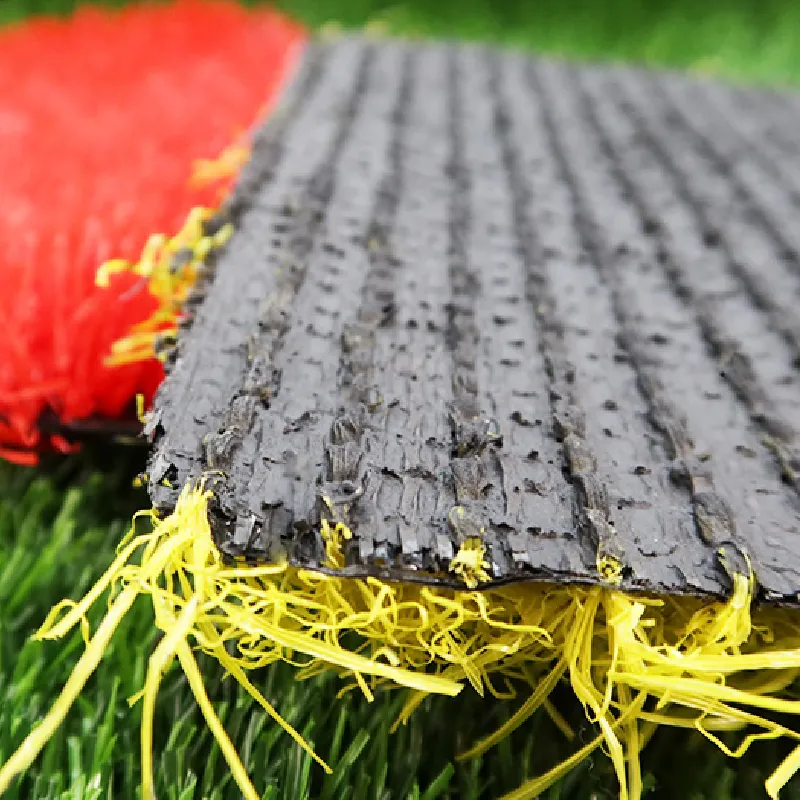
- Afrikaans
- Arabic
- Belarusian
- Bengali
- Czech
- Danish
- Dutch
- English
- Esperanto
- Estonian
- Finnish
- French
- German
- Greek
- Hindi
- Hungarian
- Icelandic
- Indonesian
- irish
- Italian
- Japanese
- kazakh
- Rwandese
- Korean
- Kyrgyz
- Lao
- Latin
- Latvian
- Malay
- Mongolian
- Myanmar
- Norwegian
- Persian
- Polish
- Portuguese
- Romanian
- Russian
- Serbian
- Spanish
- Swedish
- Tagalog
- Tajik
- Thai
- Turkish
- Turkmen
- Ukrainian
- Urdu
- Uighur
- Uzbek
- Vietnamese
Exploring the Most Lifelike Artificial Turf Options for Modern Landscapes and Sports Fields
Dec . 25, 2024 12:14 Back to list
The Evolution of Artificial Turf The Most Realistic Options Available
Artificial turf has come a long way since its inception in the 1960s. Originally developed for use in sports arenas, particularly for the Astrodome in Houston, Texas, the early versions of synthetic grass looked and felt artificial, with a shiny, plastic appearance that was a far cry from natural grass. Today, thanks to advancements in technology and innovative materials, the most realistic artificial turf mimics natural grass so closely that it is often indistinguishable from its living counterpart. This article explores the evolution of artificial turf, its benefits, and the state-of-the-art versions available today.
One of the key factors contributing to the realism of modern artificial turf is the development of advanced fibers. Today's synthetic grass is made from polyethylene or polypropylene materials that are designed to replicate the texture and color of natural grass blades. Manufacturers have focused on creating multicolored fibers that include varying shades of green and tan, effectively capturing the nuances of real grass. Additionally, modern turf incorporates a more sophisticated tufting process, allowing for deeper, denser pile heights that enhance the overall appearance and feel.
Another significant advancement is the inclusion of infill materials that aid in achieving a more natural experience. In many contemporary artificial turf systems, a combination of materials such as crumb rubber, sand, and organic infill mimics the support and resilience of soil. This not only helps the grass blades stand upright but also creates a more cushioned surface that feels more like real grass underfoot. The choice of infill can also impact the turf’s drainage capabilities, ensuring that water disperses efficiently and preventing the formation of puddles.
At the same time, concerns about the environmental impact of synthetic turf have led to changes within the industry aimed at sustainability. Many manufacturers are now producing recyclable and eco-friendly artificial grass compositions. Some products are designed for full recyclability, allowing the materials to be repurposed or reused at the end of their lifespan. This shift toward sustainability helps alleviate some concerns surrounding the environmental footprint of artificial grass, making it a more viable option for homeowners and recreational facilities alike.
most realistic artificial turf

The uses of realistic artificial turf extend beyond just sports fields. Residential lawns, playgrounds, and commercial landscapes are increasingly adopting synthetic grass, driven by a range of benefits. Homeowners appreciate the low maintenance requirements, given that artificial turf eliminates the need for mowing, watering, and fertilizing. This not only saves time and labor but also translates into a reduction in water usage, making it an environmentally friendly option in drought-prone regions.
Artificial turf is also associated with increased durability. Designed to withstand heavy foot traffic, it can maintain its appearance and integrity for years without fading or deteriorating, making it an excellent choice for high-use areas. Furthermore, the maintenance associated with synthetic grass is minimal compared to natural lawns, reducing long-term costs for homeowners and facility managers.
As technology continues to advance, the future of artificial turf looks promising. Innovations in tufting techniques, fiber technology, and environmentally friendly materials will undoubtedly continue to enhance the realism and functionality of synthetic grass. Whether for sports, recreation, or aesthetic purposes, the most realistic artificial turf options available today not only meet but exceed expectations, providing sustainable solutions that cater to the needs of various environments.
In conclusion, the evolution of artificial turf has brought us to a point where synthetic grass can replicate the look and feel of natural lawns while offering numerous practical benefits. With ongoing advancements and a focus on sustainability, realistic artificial turf is poised to remain a popular choice for homeowners, athletes, and landscape designers alike.
-
The Benefits of Artificial Turf for Indoors
NewsJul.15,2025
-
How Artificial Grass Suppliers Ensure Quality Products
NewsJul.15,2025
-
Artificial Grass and Pets: A Space for Relaxation
NewsJul.08,2025
-
Balcony & Outdoor Decoration with Artificial Grass
NewsJul.08,2025
-
Best Indoor Artificial Grass for Home
NewsJul.07,2025
-
Best Pet Turf for Dogs: Safe & Durable Artificial Grass Options
NewsJul.07,2025
Products categories









